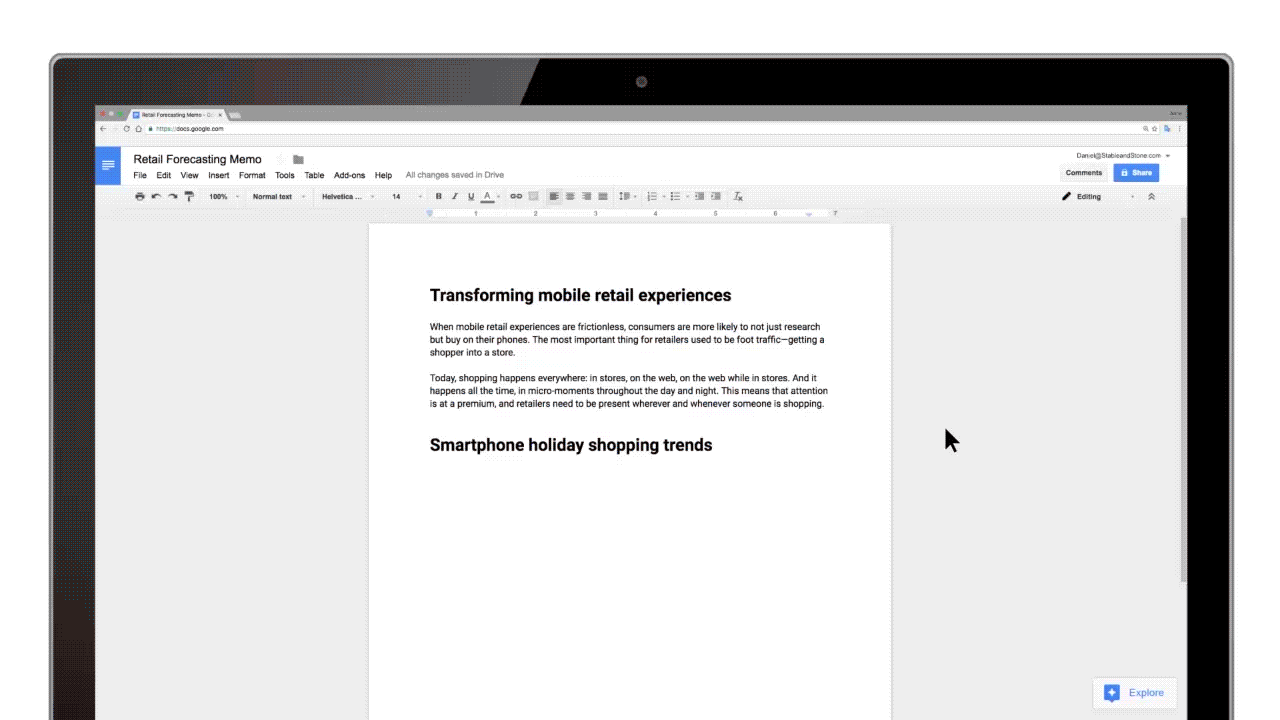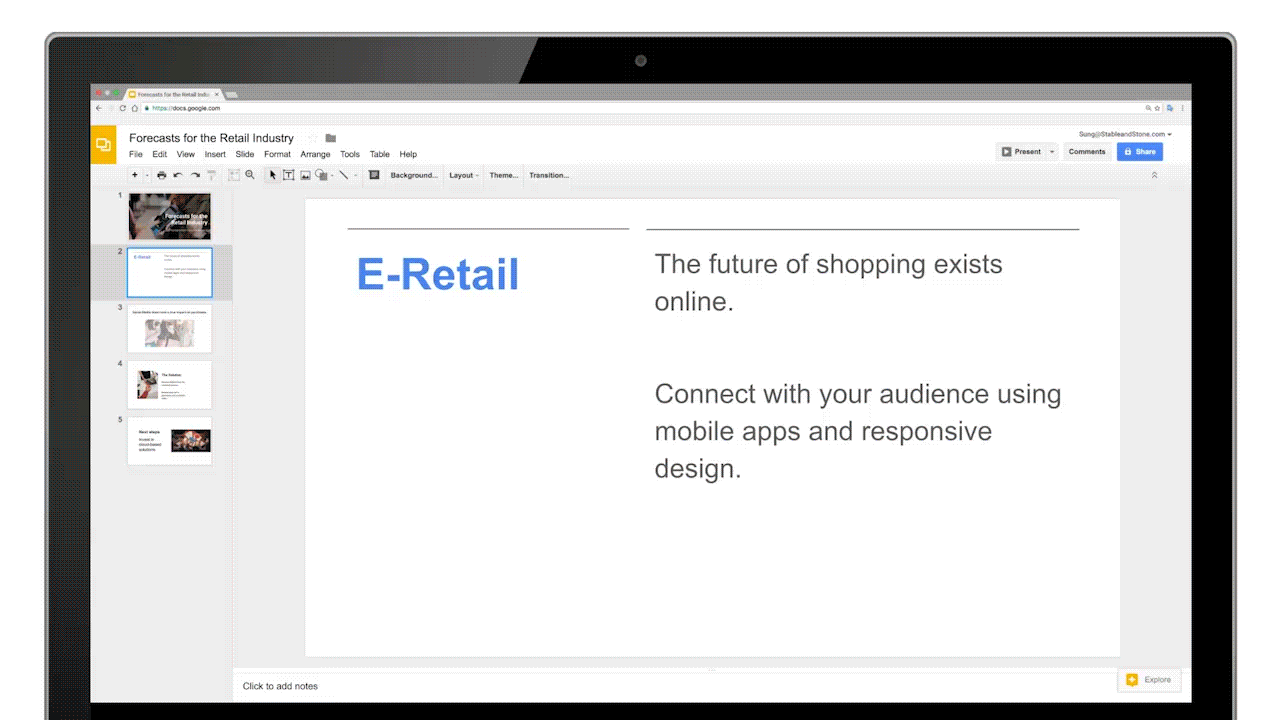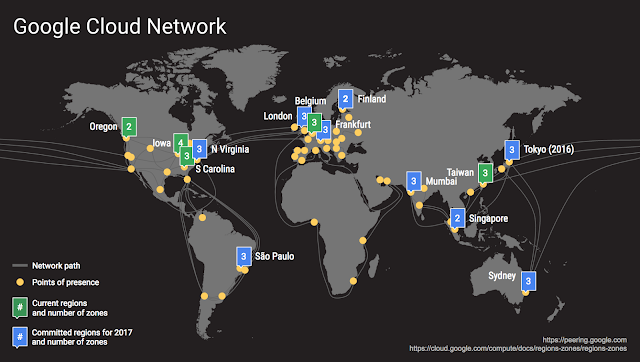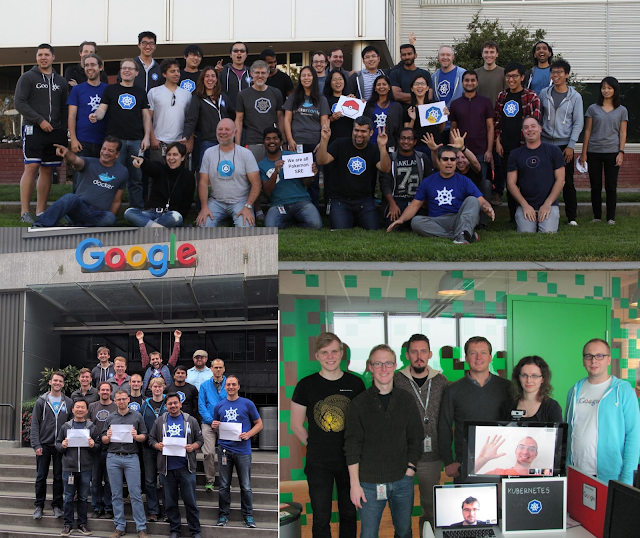Posted by Prabhakar Raghavan, Vice President Apps, Google Cloud
Research shows that each week we spend the equivalent of three work days on common tasks like emailing, scheduling and attending meetings and gathering information, and only two work days on the role we were hired for. Repetitive, mechanical tasks that take up our time are exactly the kinds of tasks that computers are great at, and advances in machine intelligence help make this a reality. Today we’re launching new capabilities across
G Suite to help employees reclaim their time and come together as teams on strategic and creative projects so they can better serve their customers.
Google has been driving machine intelligence research for over a decade, and the same underlying work that
beat the world Go champion earlier this year is also powering more than one hundred product efforts, from
instant translation to
photo recognition, across Google. A year ago,
Smart Reply launched, offering auto-generated replies for emails that only need a quick response. Now, more than 10% of all replies on mobile are sent using Smart Reply. The reception has been so strong that we're continuing to apply machine intelligence across our suite to solve customer problems.
Smarter storage
Second only to wrestling with their inboxes, searching for and gathering information is a top drain on employees’ time. In fact, up to a full day per week can be spent on this alone.
Quick Access in Drive on Android will make the most relevant files to the work you’re doing easily accessible — right at your fingertips when you open Drive. Based on signals like your interaction with colleagues, recurring meetings and activity in Drive, machine intelligence helps Drive understand the rhythm of your workday and offers the files you need before you even ask. Our customer research shows that Quick Access saves about 50% of the time an employee would usually spend finding a file.
Smarter scheduling
Finding time to meet with colleagues can be hard, especially when the list of people and locations you’re coordinating starts to grow. Google Calendar uses machine intelligence to help you easily
find a time when invitees are free, and it also suggests available rooms based on your previous bookings. And, when the list of invitees grows long and no times are available, Calendar will suggest times across the group where the conflicts are easiest to resolve, such as recurring 1:1 meetings.
Smarter spreadsheets
A year ago we launched
Explore in Google Sheets to help you summarize your spreadsheet data with automated charts and insights. But, many users might not experience the full value of spreadsheets because they can't write formulas. This is a case of the computer requiring you to speak its language. Machine intelligence turns this upside down, so now the computer understands your language. You can simply enter your question using natural language and Explore in Google Sheets will use Natural Language Processing to translate your question into a formula and offer an instant answer.
Smarter documents
In 2012, we launched a
research capability in Google Docs that brought the power of Google’s search engine right into your document. Today, we’re adding Explore in Google Docs with machine intelligence to automatically recommend related topics to learn about, images to insert and more content to discover. You can even use
Explore in Docs to find a related document from Drive, so you spend less time switching between apps and more time polishing your ideas.
Smarter presentations
Turning your inspiration into a presentation can be a lot of work. Often, employees spend more time formatting slides than thinking creatively about the story they want to tell. Now, as you add content to your presentation,
Explore in Google Slides dynamically offers layout suggestions that help your content shine. We’ve seen that people save over 30% of the time they would have spent on formatting when they used this capability. In just a couple of clicks, you’ll have slides so polished people will think you're a professional graphic designer.
The best thing about these intelligent features is that they'll continue to learn and improve over time the more they're used, and save you even more time tomorrow than they save you today. You can apply this time to strategic planning, creative thinking and collaborative work with your team.
Drive for teams
When Google Drive
launched in 2012, bringing all of your work to all of your devices was a key focus. Today, with Drive installed on more than one billion smartphones, mobility is a given. As businesses have adopted Google Drive, a new focus has emerged: teams. Teams move fast, they grow, they shrink, they’re rebuilt. In order to keep pace, a new capability called Team Drives redefines the model, shifting from a focus on the individual user to a focus on the team. Content ownership and sharing are managed at the team level, and new roles give more granular control over team content. Team Drives help streamline teamwork from end-to-end, from onboarding a new team member (add her to the team and she instantly has access to all of the work in one place) to offboarding a departing team member (remove him from the team and all of his work stays right in place), and everything in-between. We’ve been previewing Team Drives with a small set of customers, and we’re excited to begin to extend this capability to more customers through an
Early Adopter Program.
 |
| (click to enlarge) |
Meetings for teams
Teams extend beyond office walls — spanning countries and companies — and video meetings have become critical to bringing teams together. No matter where you’re sitting or even when you’re on the go, you expect to be plugged in so you never have to worry about missing a thing. A new meeting experience for Google Hangouts makes this exceedingly easy: no downloads, no browser plugins, invite anyone, join from any device, even without an account or a data connection. Every meeting generates a short link and dial-in phone number so you can invite anyone without friction. An updated user interface accommodates up to 50 video participants, and with seamless integration into Calendar and instant screen sharing, your team will be better connected than it ever was before. Like Team Drives, we’ve been previewing this new meeting experience with a small set of customers, and we'll be extending this to more customers with an
Early Adopter Program.
From the beginning our suite was built on the idea that when people can work together easily from anywhere, they accomplish more. Machine intelligence has been
improving the user experience in our apps for a decade, and the pace is accelerating. These updates to G Suite help employees take back the time they spend on repetitive tasks and help teams break down silos and connect even when they can’t be in the same place. With our focus on machine intelligence and our commitment to transforming the workplace, there’s much more to come.




















